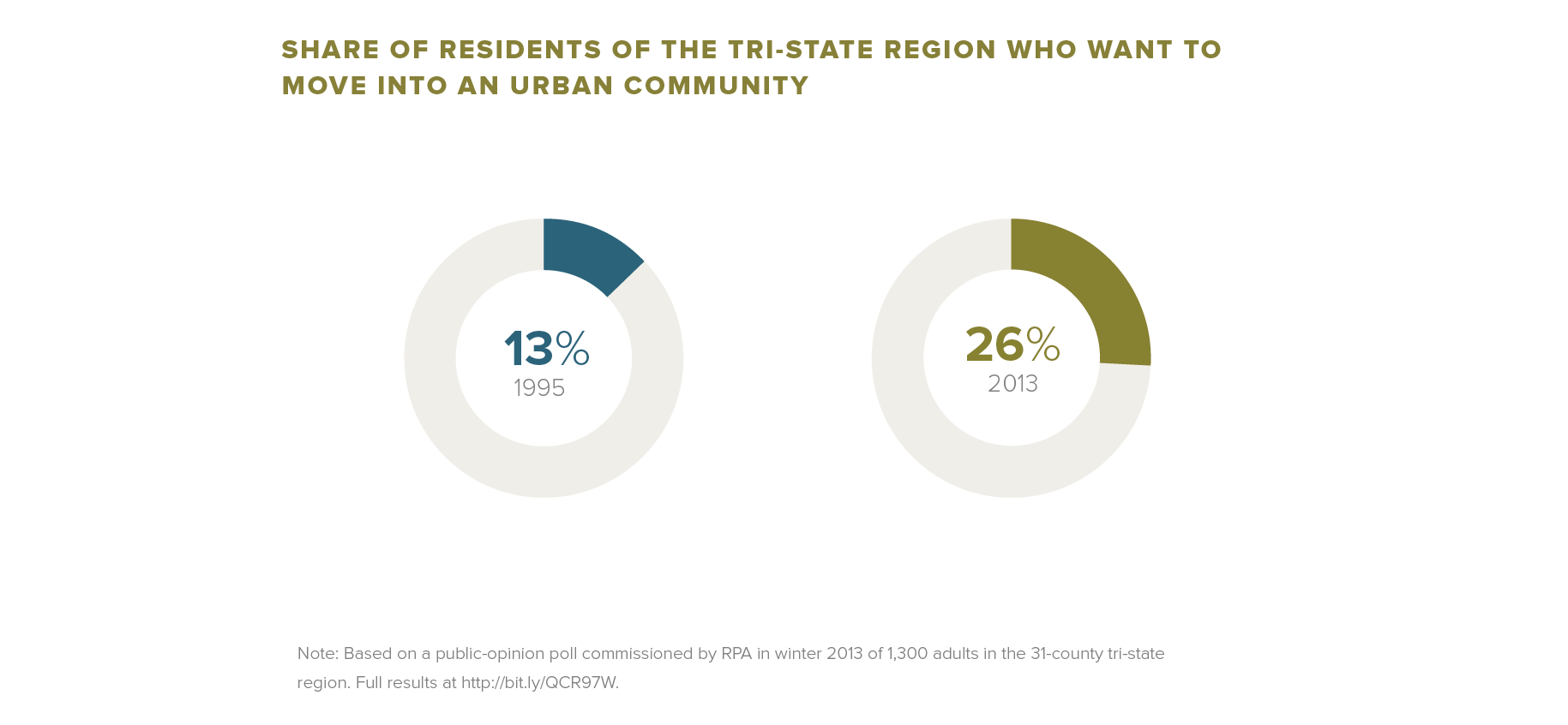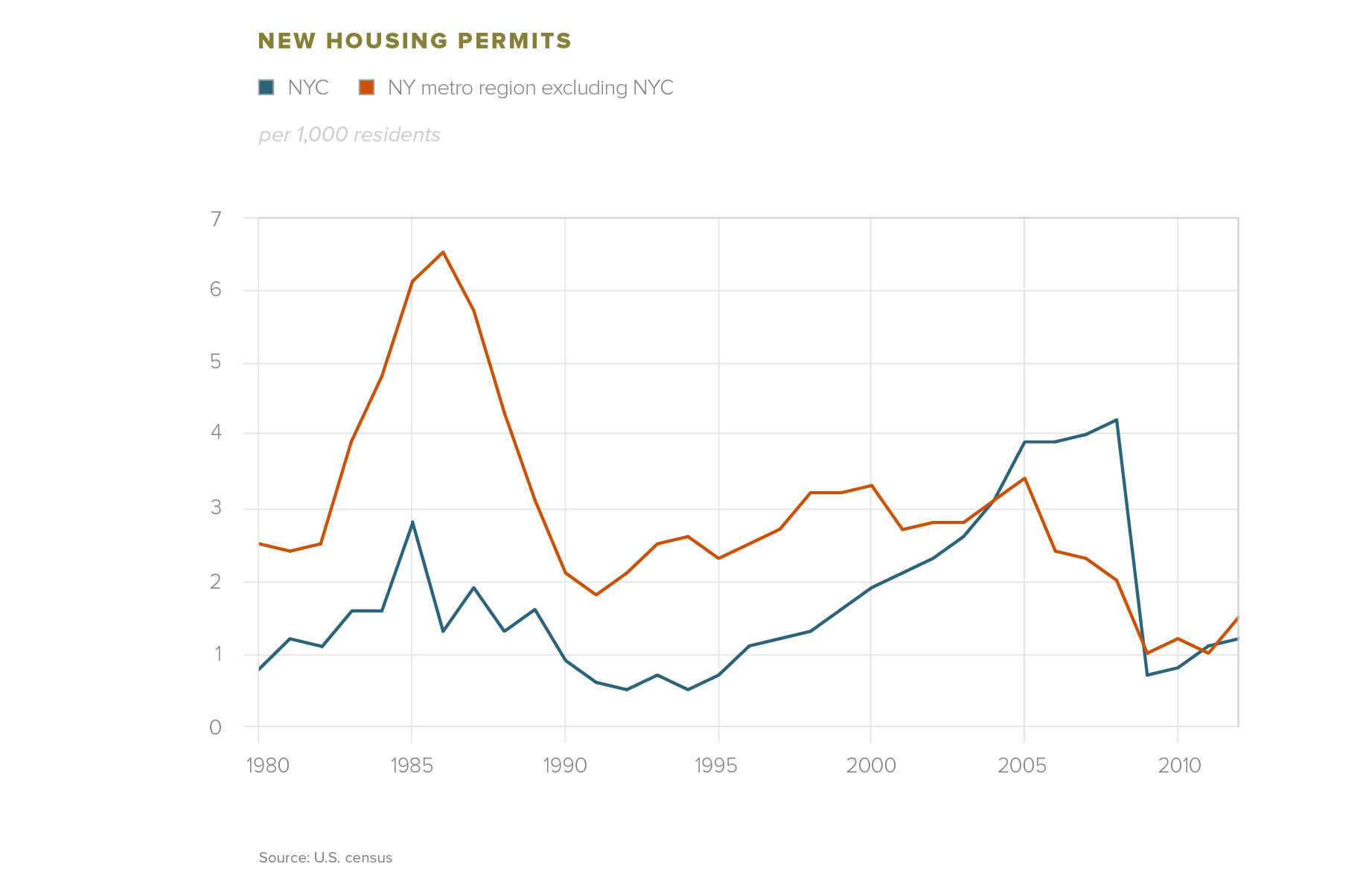The suburbs are falling behind.
The suburban slide threatens the region’s prosperity as a whole. New York and the region’s other cities depend on the suburbs for a large share of their workforce, and the metropolitan area’s appeal depends in part on having a diverse mix of urban and suburban communities. Without more suburban housing priced for different income levels, cities will bear a heavy burden of meeting the region’s affordable-housing needs.
 SCROLL TO LEARN MORE
SCROLL TO LEARN MORE
Job growth has been much weaker in the suburbs than in New York City.
The number of jobs in New York City has risen 12% since 2003. In Northern New Jersey and Southwestern Connecticut, jobs have declined 1%.

Poverty has grown faster in the suburbs.
While poverty remains concentrated in the region’s urban core, the poverty rate is rising faster outside of New York City.

The demand for urban, walkable communities is on the rise …

This change is being driven by young adults: Nearly half (45%) of 18-29 years olds who want to move would prefer living in an urban area.
‘We live right downtown so it’s very convenient. I take my kids out every day in the summertime, it’s just accessible, the malls there, stores, grocery shopping, everything.’ Lisa, Fairfield County, CT
… and New York City is much more walkable than any other part of the region.
The pace of young adults moving into the urban core has accelerated, particularly to Manhattan, Brooklyn and New Jersey’s Hudson County.
The rate of housing construction in New York City is overtaking the suburbs.
For decades, the largest share of housing construction took place in the suburbs. The tide began to turn in the mid-1990s due to a combination of high demand in New York City, pro-development policies in New York City and other cities, and restrictive zoning in many suburban communities.

New York City residents are more positive than suburban residents about the future of their communities.



